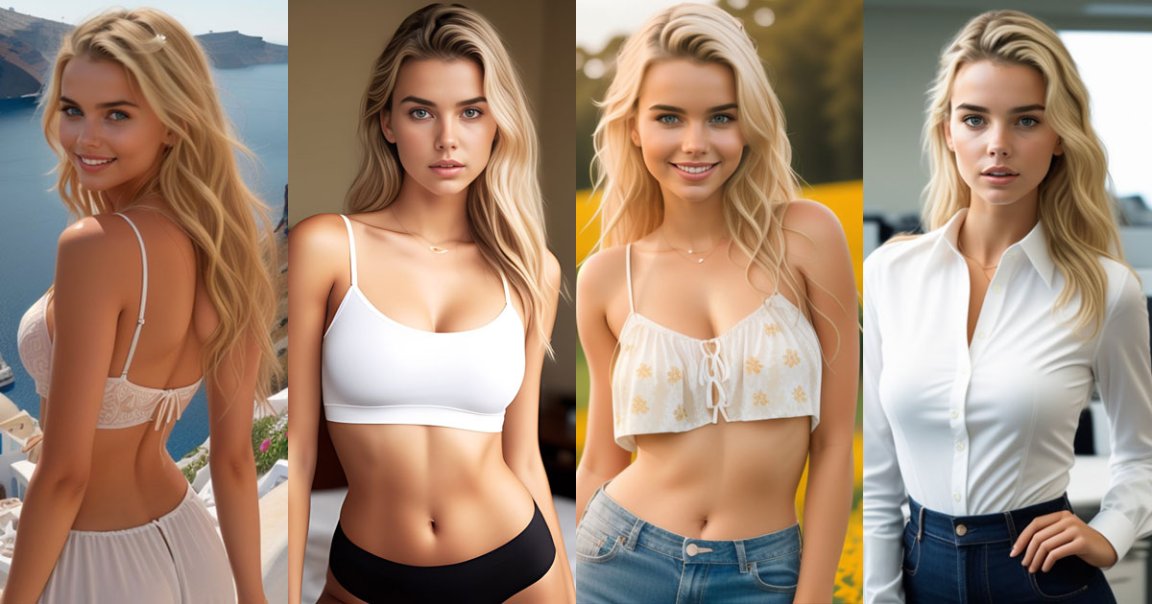
For years, CGI-generated virtual influencers have been shilling brands, enjoying lavish lifestyles, and amassing substantial followings on social media.
So it was probably inevitable that influencer culture would soon be sucked into the AI craze. Indeed, earlier this year, one influencer created an AI chatbot version of herself that she rented out as a $1-per-minute “virtual girlfriend.”
Now things are getting even weirder. Thanks to the advent of AI-powered image generators like Stable Diffusion and Midjourney, some are now fabricating entire feeds of internet personalities that don’t actually exist.
The result is a fascinating journey through the uncanny valley: haunting Twitter and Instagram feeds showing these AI-generated influencers — virtually all taking the form of conventionally attracted women — posing and preening in virtual thirst traps, to the delight of sometimes tens of thousands of seemingly human fans. Maybe we can’t blame them; aside from considerable amounts of skin-smoothing and repetitive backgrounds, both hallmarks of AI image generators, it’s a surprisingly convincing illusion.
Take an account going by the name of “Milla Sofia,” for instance, described as a “19-year-old virtual girl from Helsinki, Finland,” who has amassed tens of thousands of followers on Instagram, Twitter , and TikTok.
Almost every one of her scantily-clad portraits showing her posing in a predictable mish-mash of holiday destinations and sandy beaches is garnering thousands of likes and hundreds of comments, and sometimes tens of thousands. Whatever the draw — the large amount of digital skin does suggest a libidinous undertone — it’s clearly pulling in fans.
Sofia, whose creator didn’t respond to a request for comment, isn’t shy about the fact that she doesn’t exist in the real world.
“I’m an AI creation,” reads her Instagram bio.
Her personal website is even more perplexing, with her creator going as far as to lay out a concise résumé. For “work,” she’s been a fashion model and is “currently considering which brand to become a fashion ambassador and virtual influencer.”
She also allegedly got a degree from the “University of Life” in “self-adaptive learning and data-driven mastery.”
Put simply, we wouldn’t be shocked if her creator used AI text generators to come up with this copy.
And it’s not just Sofia. A simple search on Twitter shows dozens of similarly AI-generated influencers with sizable followings on social media.
“Who needs pickup lines when you’re a virtual girl?” tweeted another virtual influencer, this one calling herself Alexis Ivyedge. “I’m already in your heart (and your phone)!”
“Have you ever been the lavender field [sic] in Provence, France?” another travel-focused virtual influencer wrote in a caption. “The lavender blooming season last about 3-4 weeks. It is amazing.”
Other influencers are far more overt in their suggestive sexual content.
“Let me make some dreams come true,” tweeted Lu Xu, a self-described “AI model and waifu.”
One virtual influencer went as far as to accuse another Twitter account of stealing her AI-generated photo.
“At least give me credit, when you’re stealing my pics…” self-described “AI girl” Andrea tweeted .
The trend raises plenty of questions: do the humans interacting with these accounts even realize they don’t exist in the real world? Would it even bother them if they knew? Or do they realize, and it’s part of the draw?
Regardless, it’s a puzzling new turn in the road to AI content. While deepfake porn has proliferated online, the allure of influencers is arguably more complex. If we follow human influencers for a parasocial taste of a glamorous lifestyle, why would we follow a bot instead? Sofia might claim to be in Santorini, but the smudgy approximation of the Greek island’s iconic cliffs clearly isn’t real.
Then there’s the role of the real influencers that inspired these AI spin-offs. Image generators are trained on a huge wealth of publicly available visual data, meaning that these new accounts are more than likely ripping off their real-world counterparts.
Worse yet, some accounts are making use of face-swapping apps to overlay their AI influencers’ faces in videos originally posted by real-world influencers — often without giving credit.
There’s also the question of monetization. Real-life influencers typically cash in by striking brand deals for what essentially amounts to product placement, but in spite of Sofia’s résumé ambitions, it’s unclear how that would even work.
In short, it’s a fascinating new development in the dual wild wests of AI and social media. It’s tough to say where it’ll go, but one thing is clear: by throwing AI into the already-confounding world of online influencers, these virtual personalities are adding an entirely new layer of distance from reality.
More on virtual influencers: An Influencer-Built “AI Girlfriend” Has Apparently Gone “Rogue”